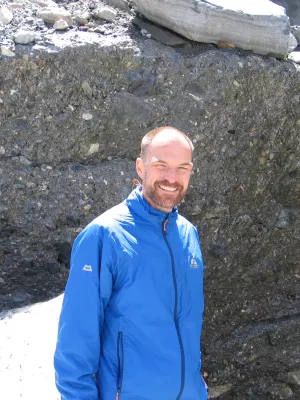
Sven Lukas
Universitetslektor

Re-interpretation of ‘hummocky moraine’ in the Gaick, Scotland, as erosional remnants : Implications for palaeoglacier dynamics
Författare
Summary, in English
Many glaciated valleys in Scotland contain distinctive, closely spaced ridges and mounds, which have been termed ‘hummocky moraine’. The ridges and mounds are widely interpreted as ice-marginal moraines, constructed during active retreat of mainly temperate glaciers. However, hummocky terrain can form by various processes in glacial environments, and it may relate to a range of contrasting glaciodynamic regimes. Thus, detailed geomorphological and sedimentological studies of hummocky surfaces in Scottish glaciated valleys are important for robust interpretations of former depositional environments and glacier dynamics. In this contribution, we examine irregularly shaped ridges and mounds that occur outside the limits of former Loch Lomond Readvance (≈ Younger Dryas; ~ 12.9–11.7 ka) glaciers in the Gaick, Central Scotland. These ridges and mounds are intimately associated with series of sinuous channels, and their planform shape mimics the form of the adjacent channels. Available exposures through ridges in one valley reveal that those particular ridges contain lacustrine, subglacial, and glaciofluvial sediments. The internal sedimentary architecture is not related to the surface morphology; thus, we interpret the irregularly shaped ridges and mounds as erosional remnants (or interfluves). Based on the forms and spatial arrangement of the associated channels, we suggest that the ridges and mounds were generated by a combination of ice-marginal and proglacial glaciofluvial incision of glaciogenic sediments. The evidence for glaciofluvial incision, rather than ice-marginal moraine formation, at pre-Loch Lomond Readvance glacier margins in the Gaick may reflect differences in glaciodynamic regimes and/or efficient debris delivery from the glacier margins to the glaciofluvial systems.
Avdelning/ar
- Kvartärgeologi
Publiceringsår
2021
Språk
Engelska
Sidor
506-524
Publikation/Tidskrift/Serie
Proceedings of the Geologists' Association
Volym
132
Issue
4
Dokumenttyp
Artikel i tidskrift
Förlag
Elsevier
Ämne
- Geology
Nyckelord
- Glacier dynamics
- Glaciofluvial erosion
- Glaciofluvial processes
- Hummocky moraine
- Meltwater channels
- Scotland
Status
Published
ISBN/ISSN/Övrigt
- ISSN: 0016-7878

